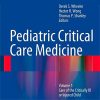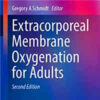Role of Combination Antimicrobial Therapy for Vancomycin‐Resistant Enterococcus faecium Infections
onlinelibrary.wiley.comEnterococcus species are the second most common cause of nosocomial infections in the United States and are particularly concerning in critically ill patients with preexisting comorbid conditions. Rising resistance to antimicrobials that were historically used as front-line agents for treatment of enterococcal infections, such as ampicillin, vancomycin, and aminoglycosides, further complicates the treatment of these infections. Of particular concern are Enterococcus faecium strains that are associated with the highest rate of vancomycin resistance. The introduction of antimicrobial agents with specific activity against vancomycin-resistant Enterococcus (VRE) faecium including daptomycin, linezolid, quinupristin-dalfopristin, and tigecycline did not completely resolve this clinical dilemma. In this review, the mechanisms of action and resistance to currently available anti-VRE antimicrobial agents including newer agents such as oritavancin and dalbavancin will be presented.

















